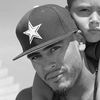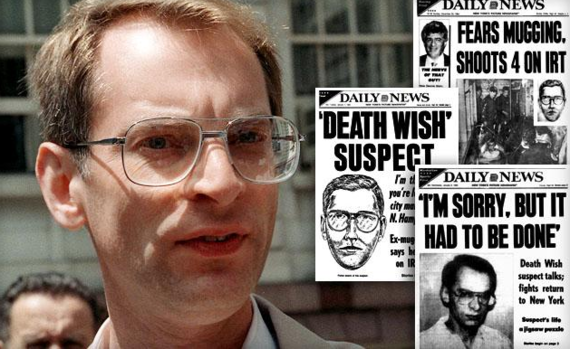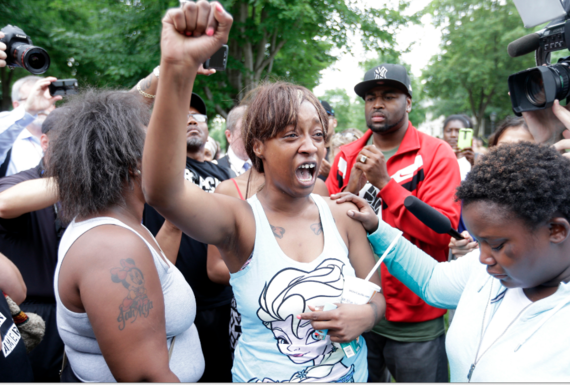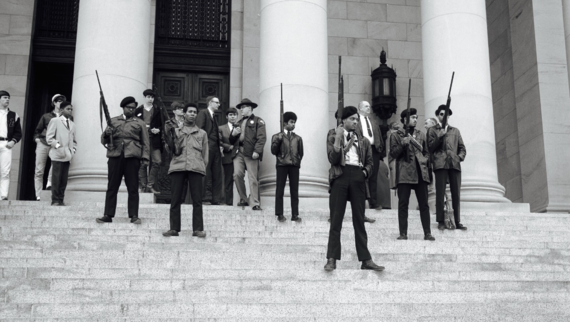
In 1984 Bernie Goetz shot four black teenagers in the subway because, he concluded, they would rob him or worse. He left one man a paraplegic with permanent brain damage. The so-called "Subway Vigilante" eventually turned himself into police but not before receiving nation-wide support from segments of the public, including media outlets, who hailed him as a hero.
Goetz' shoot first-ask questions later approach has, as videos have reminded us, been favored by law enforcement across the country. A retired corrections officer, Will Groomes, similarly shot an unarmed man in the subway last year reportedly during an altercation. Groomes was not charged. There was also the recent horrendous shooting death of Delrawn Dempsey Small, a father who was fatally shot by an off-duty NYPD cop early last week in Brooklyn. His family was in the car as he stepped out to confront a driver who had reportedly cut him off. That driver, 3-year NYPD veteran Wayne Isaacs, shot Small at point blank rage. Small collapsed between two parked cars and died in the early hours of July 4th.
The recent fatal shootings of cops in Dallas this month that have been met with widespread condemnation have now flipped a soul-searching conversation on race and policing up in the air. The attacks followed an explosive week of police killings and were reportedly a response to a persistent culture of police violence. However, in a country that has launched deadly military invasions across the world, to hail the suspected shooter in Dallas, Micah Johnson, a "hero", like Goetz, might land you on a terrorist watchlist somewhere.
Apart from the obvious differences (Johnson targeted seemingly random police officers), Goetz and Johnson are linked in that both felt a need to take matters into their own hands. Johnson was allegedly frustrated police killing of unarmed black Americans. Goetz and his supporters expressed a frustration with a criminal justice system that hadn't done enough to suppress street crime. Goetz' decision to become the Clint Eastwood of the subway, in fact, became a rallying cry for an expansion of law enforcement powers and strategies. Crackdowns on so-called subway 'vagrants', which often simply meant young people of color or homeless people, took off in the early 90's as part of the Broken Windows policing strategy.
A middle-aged white electronics dealer had not only won the support of local tabloids, he helped spark the growth of police power. His victims, all young black men, were nothing more than a side story.
The overbearing power of police ties directly back to Dallas. Micah Johnson's actions, if media reports are to be believed, followed an explosive week of police-involved killings: Alon Sterling was selling CD's in Louisiana when he was pinned down on the ground by two police officers. He was shot multiple times as police held his empty hands. Not 24 hours later, Philando Castile was shot and killed by a cop in Minnesota after being pulled over for a broken tail light. The swing towards law and order that began in the 80's and 90's have fueled and multiplied these sort of interactions.
Video of Sterling's death and footage of Castile's lifeless body touched off protests across the country. In these cases, like countless others, cellphone video proved the most vital tool in shining a light on the brutal reality of police encounters. Castile's final moments were haunting. His girlfriend broadcast the immediate aftermath of his shooting live on Facebook through her phone. The internet heard her account of what happened before the police version of events could be fed to the media. It was perhaps the boldest form of copwatching, showing the public a dramatic angle of police violence: through the lens of someone with a police gun pointed at them.
As Castile's death dawned on her, Diamond Reynolds broke down and cried. Her 4-year old daughter, who saw everything from the backseat of the car, had to console her grieving mother. The livestreaming cell phone recorded it all. Reynolds and her daughter were both reportedly detained until the next morning.
In the universe of police killings of unarmed black Americans, Sterling or Castile stand out in that both apparently were licensed to carry guns. While the practice of filming police officers is gaining mainstream acceptance as cell phone videos have become the epicenter of a movement against police brutality, the conversation on gun control, the history of which involved a political response to the Black Panthers, is today polarized along predictable partisan lines.
Considering that police officers can be seen as real and serious threats to black men and women, what would the response have been had either Sterling or Castille used their guns to defend themselves from police before they were killed? Would they have been seen as heroes, like Goetz was? The idea of black self defense from police has been a dangerous one to hold, from the Panthers on through to today (as one D.C. firefighter learned). There is also, of course, the sacredness of police life that has always dominated mainstream political thought. It's why President Barack Obama only attended services for the Dallas police officers, not Sterling or Castille. It's why Assata Shakur is in Cuba.
Johnson, of course, was someone far easier to demonize. Pictures depicting Johnson as some sort of deranged black militant make a common enemy for both conservative media, always on the alert for black militancy, and liberal media, always on alert for a high-profile mass shooting incident. Little has been said about his reported actions being an example of 'blowback', the old CIA term for the unintended consequences of aggression. It's perhaps hard to imagine that a nonstop parade of incidents of police violence wouldn't at some point provoke a violent response. And there have been other examples before Johnson: in 2013 former LAPD officer Chris Dorner shot and injured multiple cops in California over the course of 10 days after he claimed he'd been fired for reporting excessive force in the department.
Goetz' celebrated decision to solve his problems with violence, on the other hand, was given legitimacy by a criminal justice system that couldn't even punish him with a year in prison. His supporters applauded his bloodlust. He reportedly told prosecutors that his only problem was that he "ran out of bullets." He served eight months for gun possession and today lives in the same apartment he lived in 1984, on 14th street in Manhattan. It's not unlikely, if you live in New York, that you might ride the same train as the famed vigilante. The politics of crime and order maintenance that Goetz helped shape would be all around you, as well. An army of police, some now armed with military-grade long guns and the latest tactical armor, roam the city and subways today.
It's perhaps that twisted, serpentine trail of dark ironies that might make someone, well, take matters into their own hands.

 Bernie Goetz the subway vigilante (credit: NY Daily News)
Bernie Goetz the subway vigilante (credit: NY Daily News) Diamond Reynolds saw her boyfriend, Philander Castile, shot by police in their car
Diamond Reynolds saw her boyfriend, Philander Castile, shot by police in their car The Black Panthers rallying at a Washington courthouse in 1969 against gun control (credit: The Trace)
The Black Panthers rallying at a Washington courthouse in 1969 against gun control (credit: The Trace)